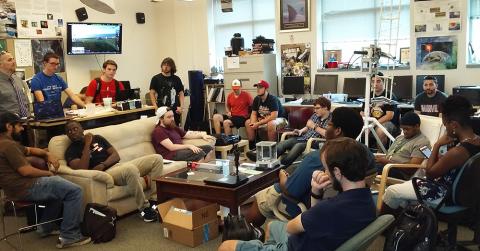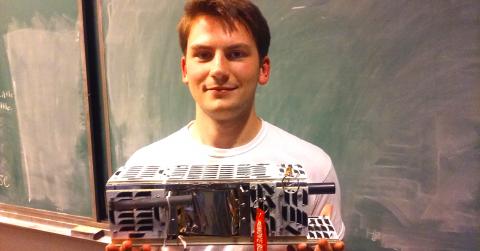8 Things Engineers Should Know
August 17, 2018By Sandy Antunes
From this:
To this:
Capitol students finished building a CubeSat in just three years! In only three years we started with the raw material called ‘students,’ and we ended up with a hunk of shiny metal the size of a loaf of bread. This CubeSat will soon orbit the Earth.
In previous blog entries I listed the names of the awesome number of students involved (30+) -- shout out to the students! We also thank the Maryland Space Grant Consortium (MDSGC) for funding this entire activity, and for encouraging us to release our work as open source so other schools can re-use it when building their own CubeSats.
The Cactus-1 CubeSat is currently set to launch 'late Fall', depending on Virgin Orbit's schedule (https://www.nasa.gov/content/upcoming-elana-cubesat-launches). We passed our Mission Readiness Review (MRR) this past July-- basically, the final exam for satellites – and we are ready to fly.
Passing is something that only 2/3rds of most teams accomplish. It’s a capstone for Astronautical Engineering department chair, Professor Angela Walter's "Crawl/Walk/Run" trio of high altitude balloons (in collab with UMD), sounding rockets (RockSats), and now this CubeSat (the 'run').
Through this process, we've delivered over 6 posters and 3 talks on the topic over 3 years, with Angela and Professor Marcel Mabson attending this year's SmallSat conference to close out. We hope that we can nominate for next year's SmallSat awards category.
In the process of achieving our CubeSat, we learned so much. In particular, we present 8 Things Every Engineer Should Know:
1) Hobbiests build, engineers build something new.
2) Unlike science, it doesn't have to make sense to be good engineering, it just has to work.
3) Buy what you must, scrounge where you can, invent what you need, build what you want.
4) Build something once that works and you might just be lucky. Build the same thing in a repeatable way and that's engineering.
5) Any design project should open new ground by adding an adjective-- faster, or cheaper, or smaller, or efficienter (and many other adjective-y possibilities).
6) Good grammar is optional. But pictures, drawings and diagrams are essential.
7) If it ain't documented, it never happened. Capture the design, the build, the tests, and the lessons learned after deployment.
8) Testing is the editing of engineering. It makes everything better.
I suppose the next challenge is to think about what's next in an experiential educational opportunity context!
Until next month,
Dr. Antunes




